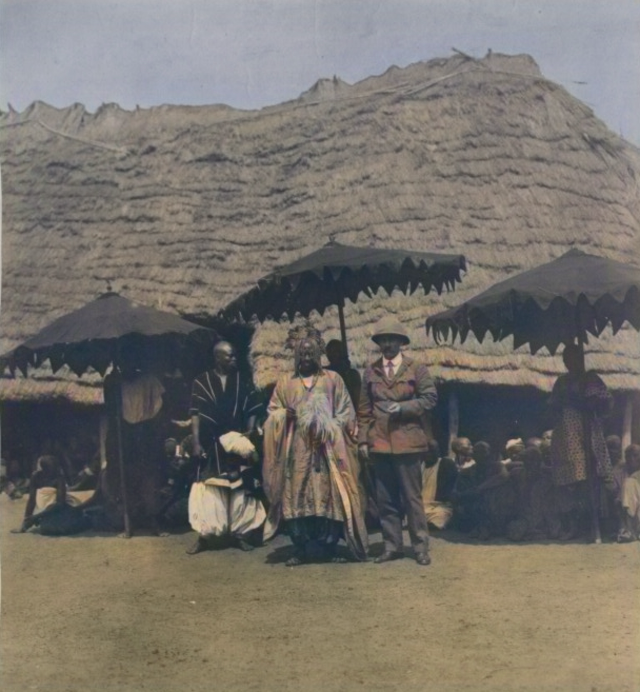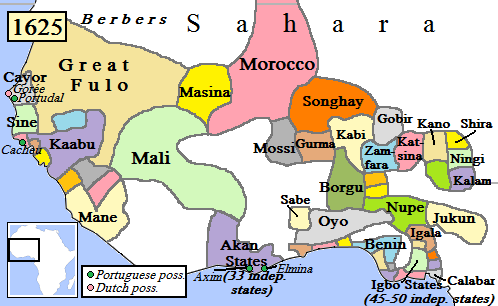|
Onisile
Onisile was an Alaafin of the Yoruba Oyo Empire The Oyo Empire was a powerful Yoruba people, Yoruba empire of West Africa made up of parts of present-day eastern Benin and western Nigeria (including Southwest zone and the western half of Northcentral zone). It grew to become the largest Yo ... during the eighteenth century. Onisile succeeded Amuniwaiye as ruler of the Oyo Empire. According to tradition, Onisile was both a great warrior and artistic. He reportedly had seven silver doors made to the seven entrances of his sleeping apartment. Onsile's downfall reportedly came after he experimented with a plant (the 'sun leaf') that supposedly attracted lightning. He was struck by lightning and paralysed, leading the Oyo Mesi (the principal counselors of state) to reject him as ruler. He was succeeded by Labisi. References Alaafins of Oyo 18th-century monarchs in Africa 18th-century Nigerian people {{Africa-royal-stub ... [...More Info...] [...Related Items...] OR: [Wikipedia] [Google] [Baidu] |
Alaafin
Alaafin, or ''The Owner of the Palace'' in the Yoruba language, is the title of the emperor of the medieval Oyo empire and present-day Oyo town of West Africa. He ruled the old Oyo Empire which extended from the present day Benin republic to Nigeria originating from states in the South East and West to the North. The people under him are called Yoruba people and spoke the Yoruba Language. The Alaafin of Oyo in Yoruba mythology and history is said to be one of Oduduwa seven grandsons who later became Kings, forming the bedrock of the Yoruba Civilization /sup> . The title was retained after the fall of the Oyo Empire as the official title of the ceremonial ruler of the contemporary natives of Oyo, Nigeria. The Alaafin is the political head of the Yoruba people and the only monarch with the pre-requisite power to appoint a chieftain representing the entire Yorubaland. Examples of such appointments include Aare Ona Kakanfo of Yorubaland and Iyalode of Yorubaland. the Alaafin ... [...More Info...] [...Related Items...] OR: [Wikipedia] [Google] [Baidu] |
Yoruba People
The Yoruba people (, , ) are a West African ethnic group that mainly inhabit parts of Nigeria, Benin, and Togo. The areas of these countries primarily inhabited by Yoruba are often collectively referred to as Yorubaland. The Yoruba constitute more than 42 million people in Africa, are a few hundred thousand outside the continent, and bear further representation among members of the African diaspora. The vast majority of the Yoruba population is today within the country of Nigeria, where they make up 21% of the country's population according to CIA estimations, making them one of the largest ethnic groups in Africa. Most Yoruba people speak the Yoruba language, which is the Niger-Congo language with the largest number of native or L1 speakers. In Africa, the Yoruba are contiguous with the Yoruboid Itsekiri to the south-east in the northwest Niger Delta, Bariba to the northwest in Benin and Nigeria, the Nupe to the north, and the Ebira to the northeast in central Nigeria ... [...More Info...] [...Related Items...] OR: [Wikipedia] [Google] [Baidu] |
Oyo Empire
The Oyo Empire was a powerful Yoruba people, Yoruba empire of West Africa made up of parts of present-day eastern Benin and western Nigeria (including Southwest zone and the western half of Northcentral zone). It grew to become the largest Yoruba language, Yoruba-speaking state and rose through the outstanding organizational and administrative skills of the Yoruba people, wealth gained from trade, and a powerful cavalry. The Oyo State, Oyo Empire was one of the most politically important states in the entirety of Western Africa from the mid-17th to the late 18th century, and held sway not only over most of the other kingdoms in Yorubaland, but also over nearby African states, notably the Fon people, Fon Kingdom of Dahomey in the modern Republic of Benin on its west. History Legend of origin The origins of the Oyo Empire lie with Oranyan (also known as Oranmiyan), the last prince of the Yoruba Kingdom of Ile-Ife (Ife). Oranmiyan made an agreement with his brother to launch a ... [...More Info...] [...Related Items...] OR: [Wikipedia] [Google] [Baidu] |
18th-century Monarchs In Africa
The 18th century lasted from January 1, 1701 ( MDCCI) to December 31, 1800 ( MDCCC). During the 18th century, elements of Enlightenment thinking culminated in the American, French, and Haitian Revolutions. During the century, slave trading and human trafficking expanded across the shores of the Atlantic, while declining in Russia, China, and Korea. Revolutions began to challenge the legitimacy of monarchical and aristocratic power structures, including the structures and beliefs that supported slavery. The Industrial Revolution began during mid-century, leading to radical changes in human society and the environment. Western historians have occasionally defined the 18th century otherwise for the purposes of their work. For example, the "short" 18th century may be defined as 1715–1789, denoting the period of time between the death of Louis XIV of France and the start of the French Revolution, with an emphasis on directly interconnected events. To historians who expand ... [...More Info...] [...Related Items...] OR: [Wikipedia] [Google] [Baidu] |


